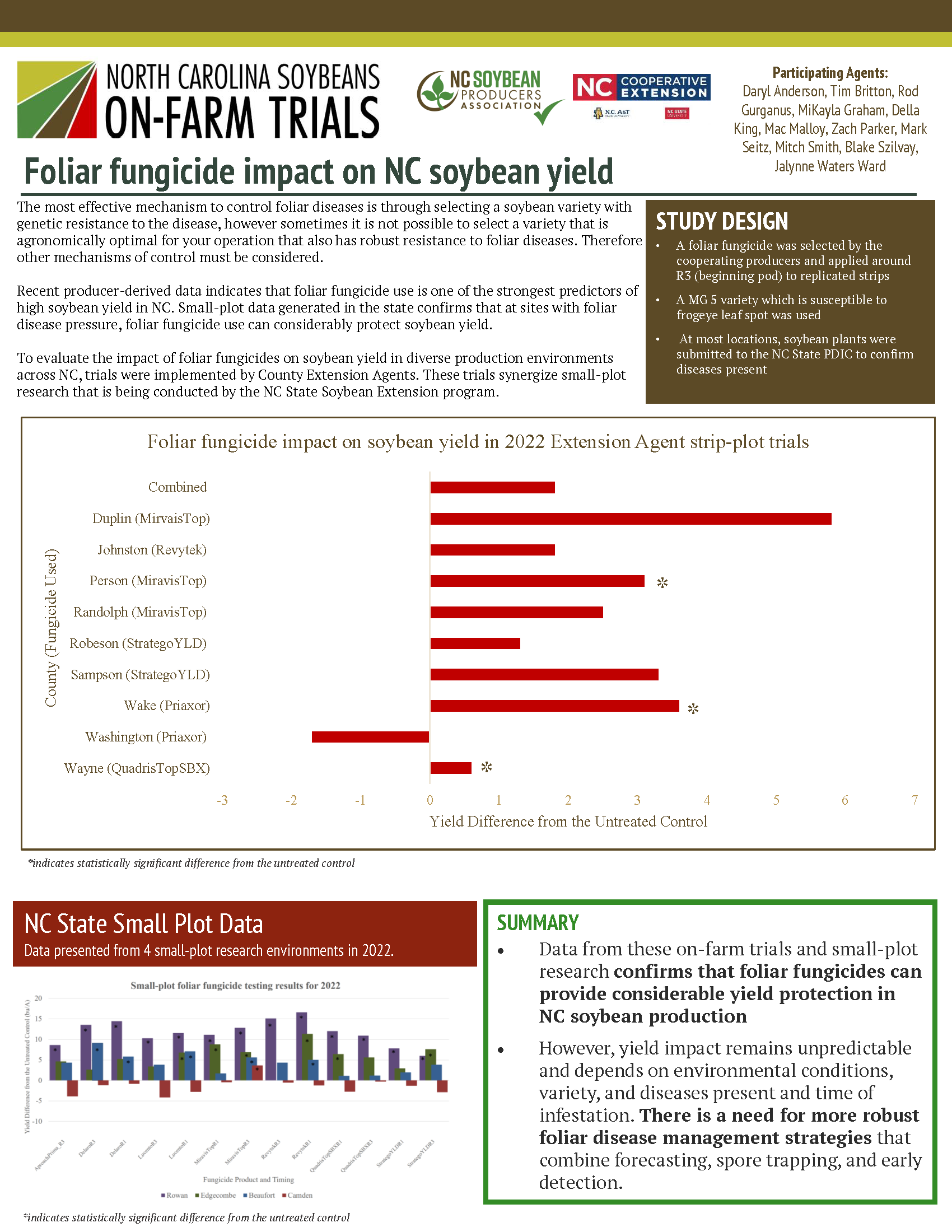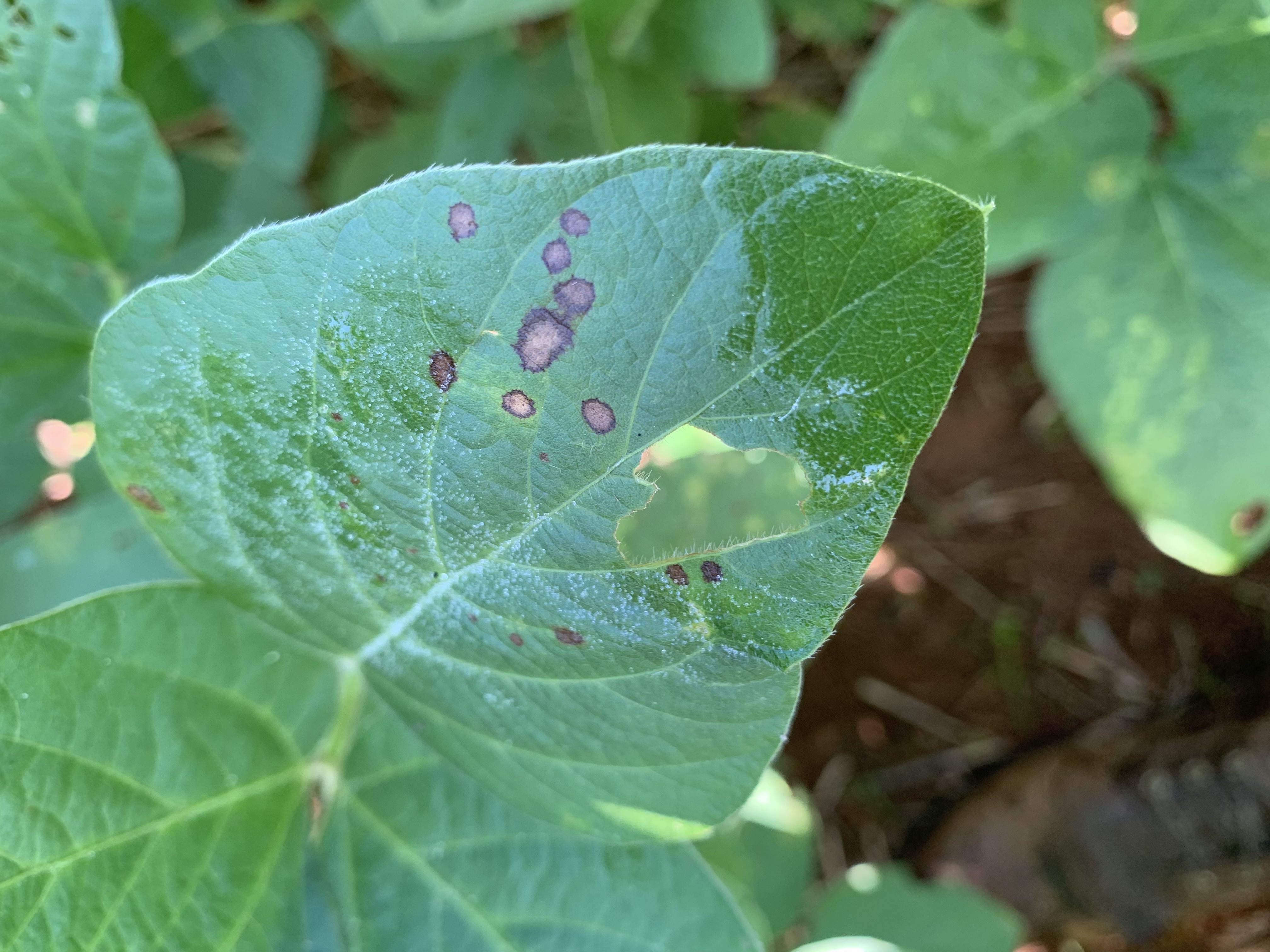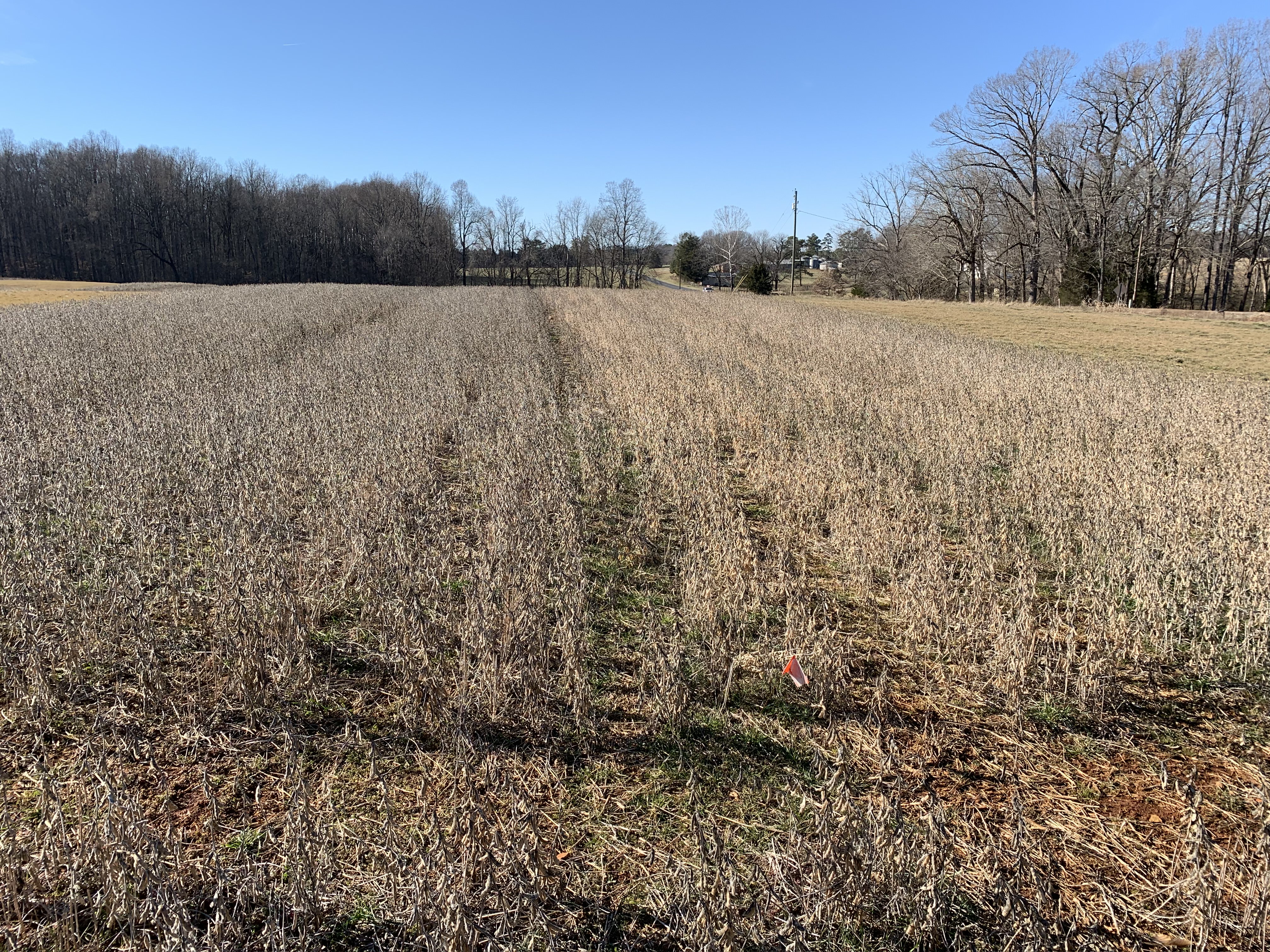2022 Foliar Fungicide Impact on NC Soybean Yield (Randolph County Result Breakdown)
go.ncsu.edu/readext?914932
en Español / em Português
El inglés es el idioma de control de esta página. En la medida en que haya algún conflicto entre la traducción al inglés y la traducción, el inglés prevalece.
Al hacer clic en el enlace de traducción se activa un servicio de traducción gratuito para convertir la página al español. Al igual que con cualquier traducción por Internet, la conversión no es sensible al contexto y puede que no traduzca el texto en su significado original. NC State Extension no garantiza la exactitud del texto traducido. Por favor, tenga en cuenta que algunas aplicaciones y/o servicios pueden no funcionar como se espera cuando se traducen.
Português
Inglês é o idioma de controle desta página. Na medida que haja algum conflito entre o texto original em Inglês e a tradução, o Inglês prevalece.
Ao clicar no link de tradução, um serviço gratuito de tradução será ativado para converter a página para o Português. Como em qualquer tradução pela internet, a conversão não é sensivel ao contexto e pode não ocorrer a tradução para o significado orginal. O serviço de Extensão da Carolina do Norte (NC State Extension) não garante a exatidão do texto traduzido. Por favor, observe que algumas funções ou serviços podem não funcionar como esperado após a tradução.
English
English is the controlling language of this page. To the extent there is any conflict between the English text and the translation, English controls.
Clicking on the translation link activates a free translation service to convert the page to Spanish. As with any Internet translation, the conversion is not context-sensitive and may not translate the text to its original meaning. NC State Extension does not guarantee the accuracy of the translated text. Please note that some applications and/or services may not function as expected when translated.
Collapse ▲In 2022, we tested the impact a foliar fungicide has on soybean yield in Randolph County and across the state. The results for the state are laid out below, but this article will focus on what was observed in Randolph County.
Our plot was planted in a double crop soybean/wheat field on July 1, 2022. Our target population was 100k plants/acre. Stand counts showed our actual population being 103k plants/acre. At V3 we made an application of Miravis Top at a rate of 13.7oz/acre to the treated plots. There was no disease present in the field at the time of application. 2 and 4 weeks after the application, more samples were sent to the Plant Disease Insect Clinic. The samples detected frogeye leaf spot as well as cercospora in the untreated plots (photo below). There was a visual difference in disease pressure between the treatments during this time, as well as at the time of harvest (photo below).
The results below show that there was not a significant increase in yield from the foliar fungicide treatments in Randolph County. 3 of the 10 trial locations in North Carolina saw a significant increase in yield from the foliar fungicide treatment. Further research will be conducted locally to understand the viability and profitability of foliar fungicide applications in soybeans.
Thank you to the producer, Ron Alcorn, for his participation in this trial.







